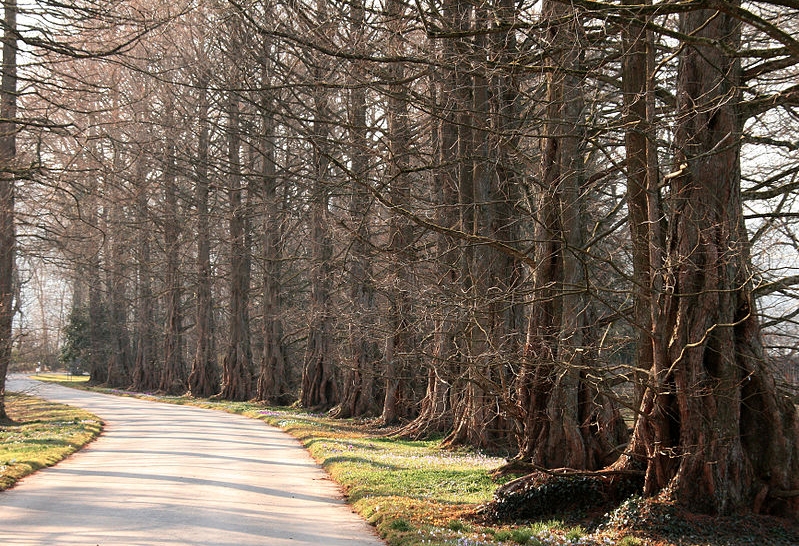Dawn Redwood : Re-Distribution
The propagation and re-distribution of the dawn has been a goal amongst botanists for the last 70 years. The reason for this is because of its recognition as a "living fossil," meaning it is a living species that was once only known from the fossil record. In its natural range, species diversity in the community is decreasing rapidly. Accounts from locals in the Sichuan-Hubei-Hunan border region indicate that vast ranges of dawn forests used to exist a couple hundred years ago. Migrating farmers burned these forests in attempt to establish rice paddies. Over 2,000 stumps and logs of dawns have been found in the adjacent lands to their current range. Habitat and climate change has also led to a decrease in reproductive success amongst the dawns. In their native range, most seedlings are not successful as a result of a dryer, warmer, and less diverse environment. Although great strides have been made toward preserving this species, only the adult individuals receive attention from conservationists. This is because optimal conditions for seedling success are naturally implausible. However, people continue to buy metasequoia seed and cuttings in attempt to propagate them locally. Many challenges have to be overcome, though. Restored dawns have a much lower germination and seedling-success rate than natural dawns as a result of inbreeding. Most dawns outside of Xioahe cannot reproduce successfully, meaning this tree has the potential to become extinct.

